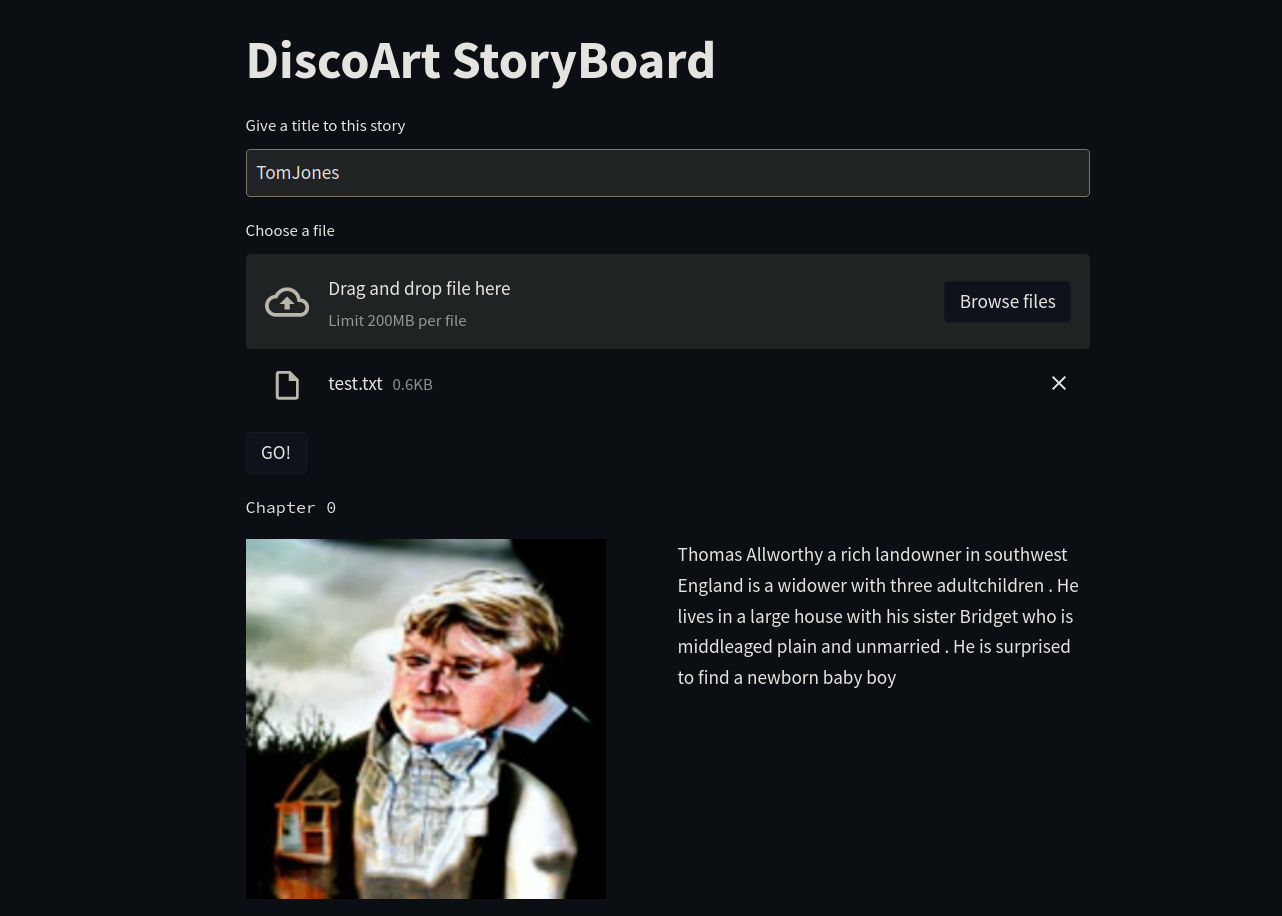Thanks to Jina AI for providing the beautiful DiscoArt, which is a very cutting edge technology for generative art.
This project is a PoC for a webservice that provides a simple way to create images giving very long texts. Thanks to Distillbart model, it is possible summarize book's chapters, without losing the main themes in it. Giving this summary as an input to Discoart, the final result is impressive.
Few requirements are needed :
- Install the requirements.txt
- Having a GPU on your laptop/PC/Server/EC2 (I run this on a 3060 laptop GPU, so the values in da_client.py works for GPU with specs >= of mine)
- Correcly install torch, I think that the best way is visit the official page, choose your setup and than copy paste the right command
I think that for PoC or ML projects Streamlit is a game changer, I use it every time I can :)
So, to launch the streamlit app just:
streamlit run main.pyServing Discoart is very simple, the command is:
python -m discoart serve [flow.yml](flow.yml)I used a custom flow.yml just to specify a different protocol; I use grpc not http which is set by default.
It takes as input the name of the story; it is needed just to label the images.
Then a .txt file, to separate each chapter use !!!.
It runs in serial, each chapter is processed one by one. With my parameters, each image take 2 minutes more or less. Clearly all depends from available resources and from the parameters you choose.
After it runs, an image and the summary used as input will pop up.
Automatically, streamlit opens your browser and you are ready to use this WoW-application. At first time you start the service, it takes ~30-40 sec to load the bert model, than it is ready to go!
⚠️ THIS IS A PROOF OF CONCEPT
This is just a proof of concept, written in a couple of hours; I would spend few more hours to adding more feature, containerized it and improve its usability
